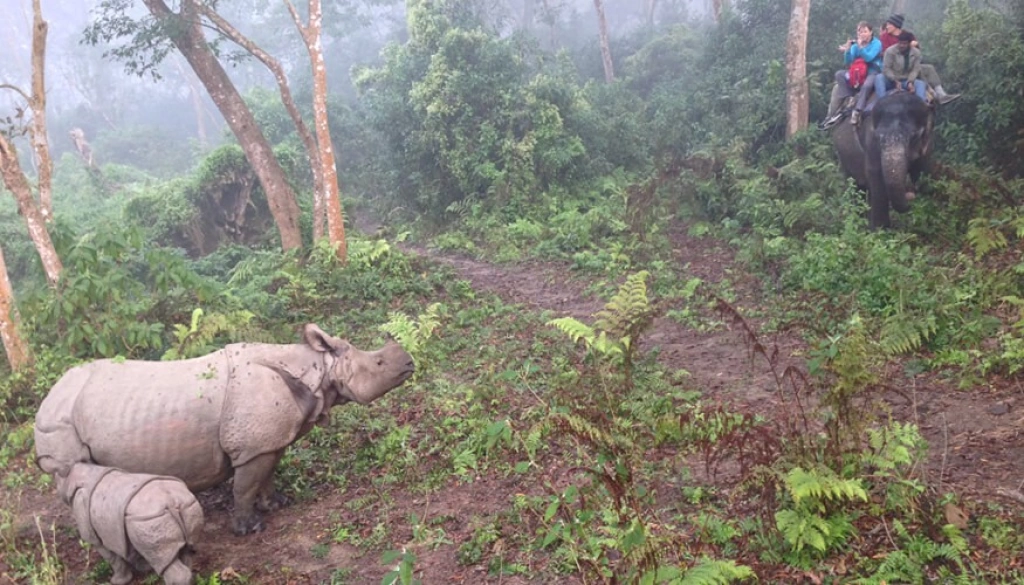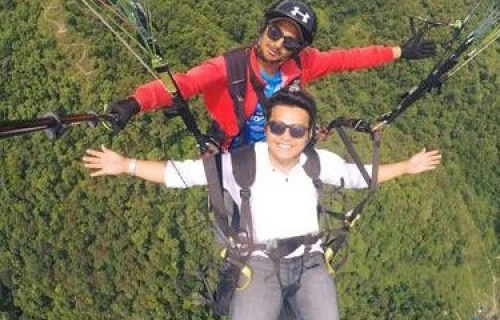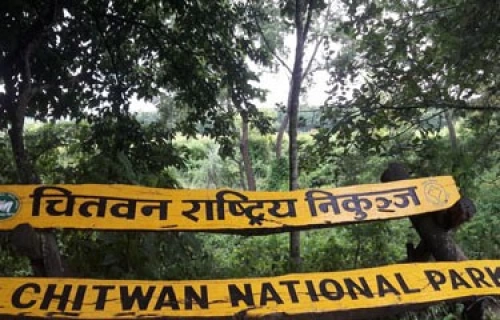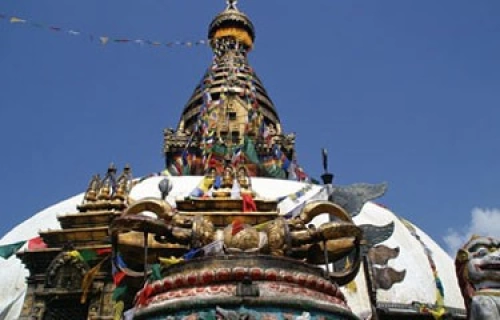About Nepal Family Fun Tour: Explore, Culture, Trekking
Family Fun Tour is an action packed trip that combines city tours, trekking and jungle safari all into one fun filled trip. It is suitable for families as it is neither very strenuous, nor does it go to a very high altitude. Everyone will enjoy this amazing package.
Kathmandu City Tour: Kathmandu Valley was once a lake. According to legend, a Buddhist saint named Manjushree slashed a passage through the hills at Chobar, which drained the water. Over the millenniums, the civilization which emerged was based on a unique fusion of Hinduism and Buddhism.
Wood carvings, crafts, statues and architecture crafted by Newar artisans during the Malla dynasty portray the affluence of their kingdoms and the skill of the ancient artisans. Until the 1800s the Kathmandu Valley was separated into three royal kingdoms with palace complexes called ‘Darbar Squares’- Kathmandu, Patan and Bhaktapur. Each kingdom had ancient palaces enclosing great temples where devotees still pay homage.
Kathmandu Durbar Square teems with vendors, tourists and local devotees visiting the temple of the Living Goddess, the Kumariand paying homage to deities such as the ferocious Kal Bhairab, Hanuman, Shiva and Parbati. Patan Darbar Square is interesting in that the architecture of the shrines and temples tell the story of the Historical merging of Hinduism into the beliefs of the Newari population who had been Buddhist. Bhaktapur Darbar has been made into a museum.
The 5th century Swayambunath temple is thought to be the oldest Buddhist shrine. Pilgrims climb up the 365 steps to the temple but there is an easier route by road around to the back, followed by a shorter climb. The all-seeing eyes of Lord Buddha are painted on four sides of the base and keep a protective watch over Kathmandu Valley. Swayambhunath is located on the west side of Kathmandu city, so looking east, one can see the entire Kathmandu valley. Swayambhunath is often called the "monkey temple" as a large population of monkeys lives on the premises.
Boudhanath, on the east side of Kathmandu, standing on a huge octagonal base is one of the biggest stupas in the country. Like Swayambhunath, the stupa is also inset with prayer wheels and the all-seeing eyes of Lord Buddha looking out in four directions. Worshippers are constantly circling the stupa and spinning the sacred prayer wheels. Boudha is the focal point for Buddhists from all over the country to celebrate Buddhist festivals and take part in the sacred rituals.
Pashupatinath, located in the north-east of Kathmandu, is the holiest of all Hindu shrines in Nepal and is dedicated to Lord Shiva, the destroyer and is the abode of lord Pashupatinath. The Pashupatinath temple is a large double-roofed pagoda plated with gold and brass with silver plated gates. It contains the sacred lingam of Pashupatinath. Along the wide but shallow Bagmati river are cremation ghats. The annual festival of Shivaratri (February/March) attracts thousands of devotees, including a large number of pilgrims from India.
The Ghorepani- Poon Hill Trekking – This short but amazing trek is a favorite in the Annapurna Region. Besides the fantastic scenery on the trail, it leads to the favorit viewpoints for the Annapurna Range. The view from Poon Hill is a wide Himalayan panorama that stretches from Dhaulagiri, 8167m, (the world's 7th highest peak), to Manaslu 8156m (the world's 8th highest peak) in the east, with the mighty Annapurna range in between them.
The trek starts at Nayapul, about a one hour drive from Pokhara. The trail follow the Modi Khola for 15 minutes to Birethanti Village, 1015 meters, and then starts climbing along the bank of the Bhudhigandaki Khola through terraced fields and waterfalls and rhododendron and bamboo forests alive with birds and butterflies. We stay overnight at the village of Hile, 1495m. The next day is a steep climb up flagstone stairs to Ulleri, and then becomes more gradual up to Ghorepani, 2940m.
We get up before dawn and climb almost an hour to the top of Poon Hill, 3200 m for the magnificent sunrise. The path can be slippery in places. Back down to Ghorepani, for breakfast. The trail to Tadapani, 2610m, passes through Rhododendron forest with several ups & downs. The next leg of the journey is short and mostly downhill to Ghandruk, 1940m, extra lovely views of the mountains along the way. Ghandruk is a traditional Gurung village. Many men from this village have served as brave Gorkha soldiers for Britian and India. It’s an easy downhill to Nayapul, where we started our trek.
Chitwan Jungle Safari – What better way to see the wildlife of Chitwan National Park than sitting on the back of an elephant and pushing through jungles and dense grass called Elephant grass that grows up to 8 meters high ? The guide will help you to spot rhino, antelope or even the Royal Bengal Tiger. A gentle glide down the Rapti River in a dug-out canoe is another great way to see the native crocodile or ‘gharial’ as well as wildlife that come to drink. There are said to be over 450 species of birds in the park. Most people enjoy joining the Elephants in their river bath when visiting the Elephant breeding centre.
In the evening we will watch a cultural performance by the indigenous Tharu tribe including the Tharu stick dance. The beating of drums and clashing of sticks was a traditional way of keeping the rhinos and other wild animals away. The Tharu tribe lived in harmony with nature for centuries and in fact are ‘nature-worshippers’ from ancient times.
Private Tours are avialble to start instantly. Group departs when we have minimum 1 participant for any of our Tours.



